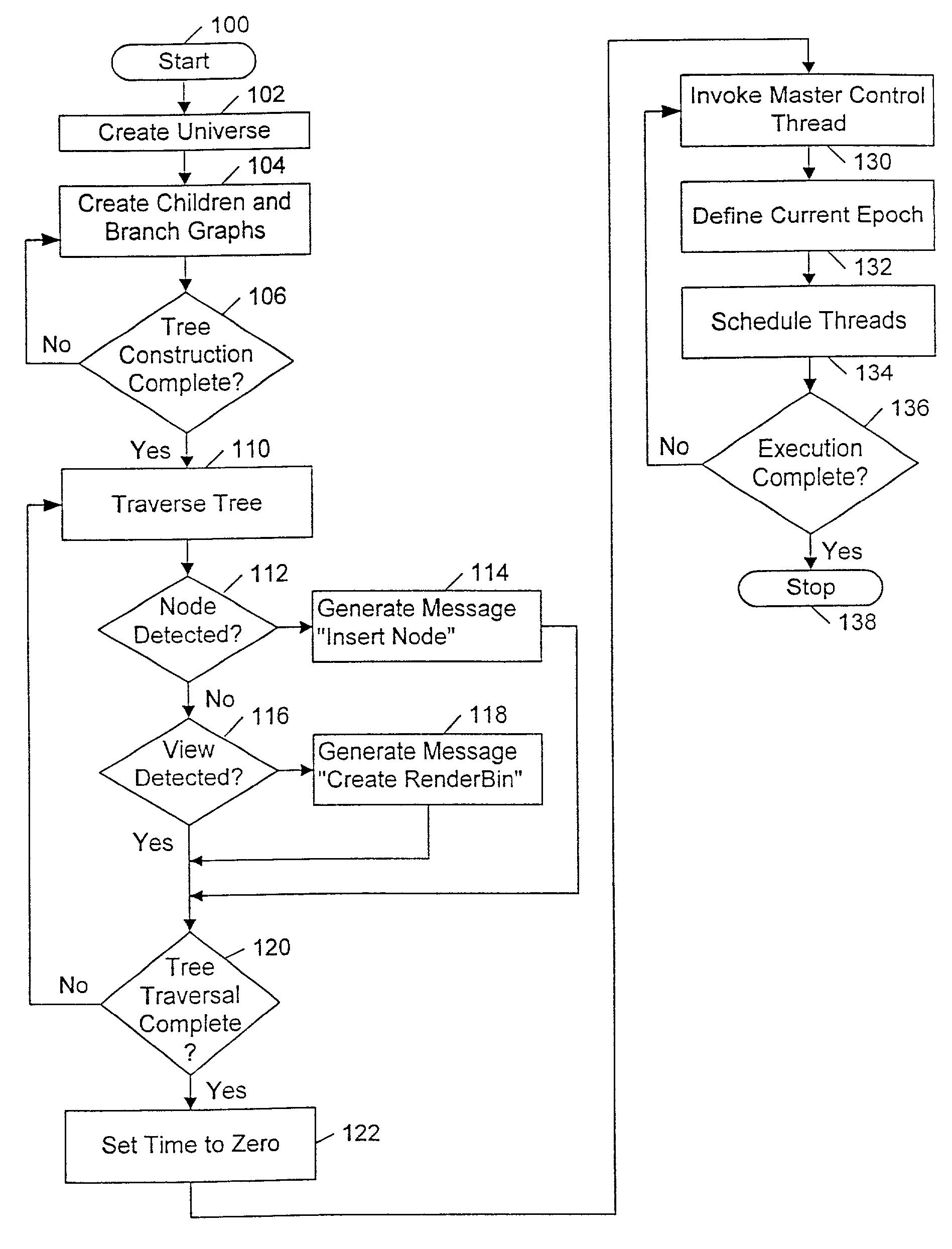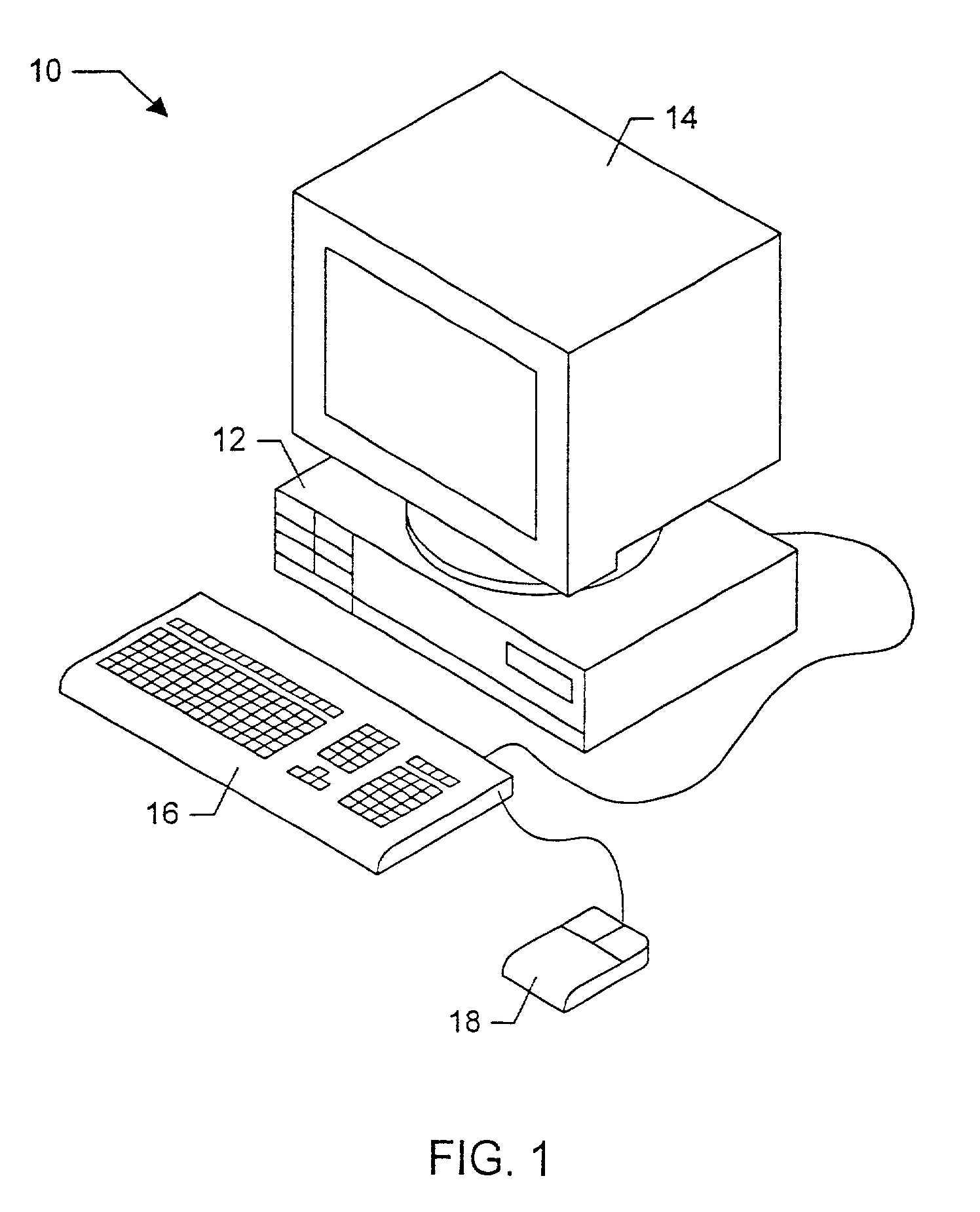Using render bin parallelism for rendering scene graph based graphics data
a technology of scene graph and graphics data, applied in the field of computer graphics, can solve the problems of increasing the complexity and amount of data being sent to the display device, affecting the display effect, and incorporating graphics processors with a great deal of processing power,
- Summary
- Abstract
- Description
- Claims
- Application Information
AI Technical Summary
Problems solved by technology
Method used
Image
Examples
example embodiment
[0077] Example Embodiment Using Java 3D.TM. API
[0078] Java 3D Architecture
[0079] The Java 3D API may be used to implement one embodiment of the system and method described above. One such implementation is described in detail below. However, it is noted that other implementations are also possible and contemplated. To describe this particular embodiment, an overview of the Scene Graph Structure will be presented, and then components of a runtime system will be presented. Next, the process of system startup, runtime system operation, and system shutdown are presented. Then, specific features of this embodiment are explained in greater detail. Also note, that standard Java.TM. and Java 3D variable names, object names, and processes are used herein. For more information on Java and Java 3D, the reader is directed to the books titled "The Java 3D.TM. API Specification," by Sowizral, Rushforth, and Deering, published by Addison-Wesley Publishing Co., ISBN: 0201710412, and "The Java.TM. P...
PUM
 Login to View More
Login to View More Abstract
Description
Claims
Application Information
 Login to View More
Login to View More - R&D
- Intellectual Property
- Life Sciences
- Materials
- Tech Scout
- Unparalleled Data Quality
- Higher Quality Content
- 60% Fewer Hallucinations
Browse by: Latest US Patents, China's latest patents, Technical Efficacy Thesaurus, Application Domain, Technology Topic, Popular Technical Reports.
© 2025 PatSnap. All rights reserved.Legal|Privacy policy|Modern Slavery Act Transparency Statement|Sitemap|About US| Contact US: help@patsnap.com



